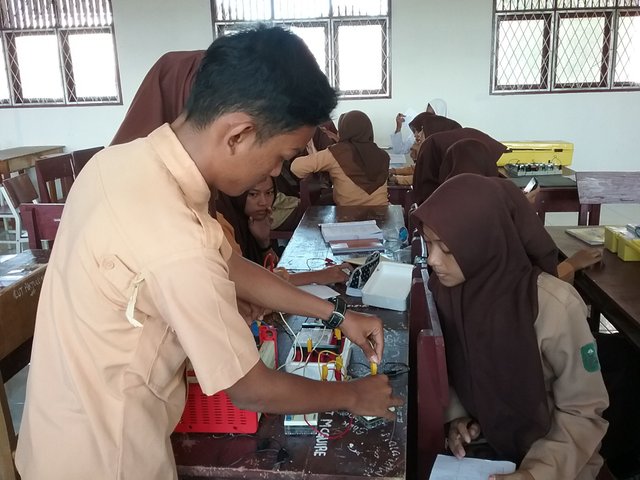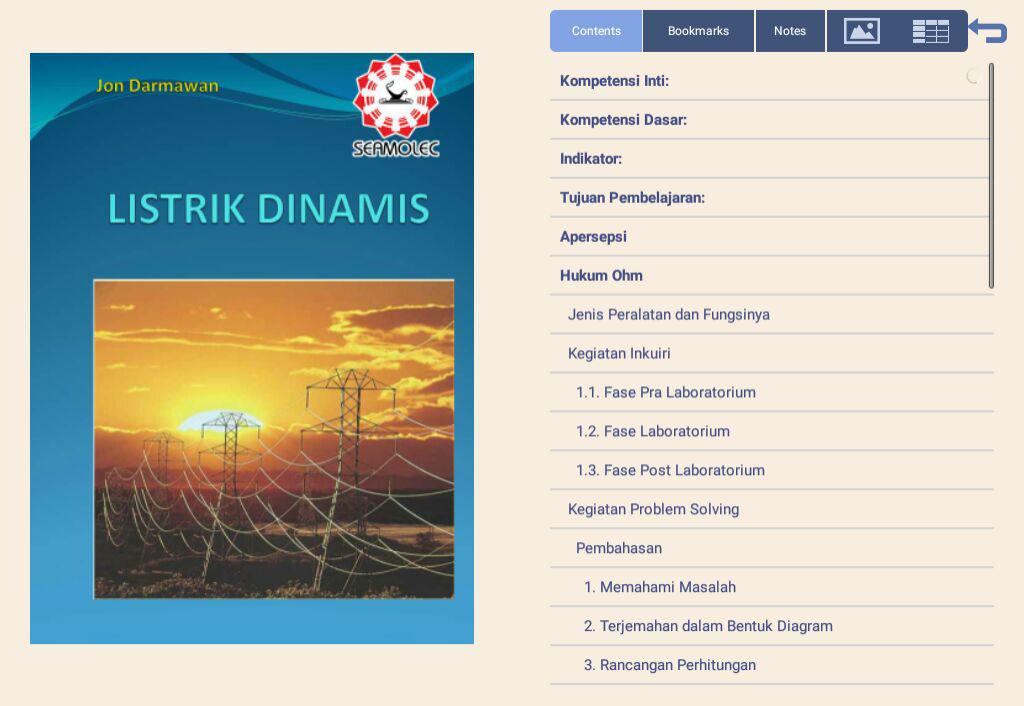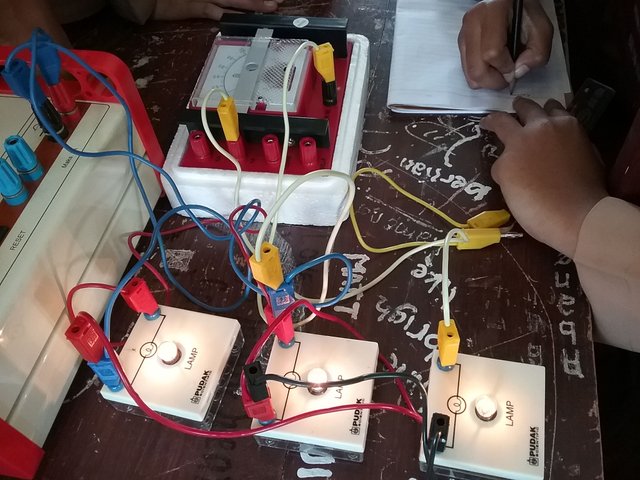 Students observe the phenomenon of dynamics electrical
Students observe the phenomenon of dynamics electricalThe inquiry activities used in this best practice are:
- Phase of Observation Phenomenon
- Phase of Formulate the Problem
- Phase submission hypothesis / prediction
- Laboratory Phase
- Phase of Post Laboratory
While problem solving is a strategy used to answer questions in the teaching materials especially questions of physics. Every physics problem that students solve must follow the steps of problem solving strategy. There are at least 4 (four) steps of problem solving used in this best practice. The four steps are:
- Understand the problem
- Translation in the form of pictures
- Design calculation
- Calculation

After using the dynamic electrical instruction based on inquiry and problem solving, there is an increase in student learning outcomes. The average student learning outcome is 85. An increase of 20%. This shows that the dynamic electrical teaching materials based inquiry and problem solving have been able to improve student learning outcomes. This is due to the inquiry stages and the problem solving strategy is working well. This fact is in accordance with the reasons for the necessity to use primarily dynamic electrical materials based on inquiry and problem solving in physics learning according to Susilawati and Nur Khoiri (2014), namely: (1) experiment and demonstration activities become dominant activity in physics learning process; (2) Problem solving becomes the learning objective and learning experience that students should possess; (3) many concepts and skills needed in everyday life related to the concept of learning.
Physical problem solving steps using problem solving strategies also contribute to improving learners' learning outcomes. Activities that require learners to understand the problem by rewriting the issue in its own words cause learners to understand physics. After learners understand the problem, the next step is to translate the problem in the form of a diagram or picture. Almost all the problems of classical physics and electricity can be translated in the form of images. Likewise, the dynamic electrical concept. Image translation is an attempt by the learner to make the problem more concise and clearly illustrated. Image translation also allows learners to describe the issue in order to do the calculation.

The next step is to make a calculation plan. The calculation design is based on the drawing by describing the equations used and the unknown quantities. In addition to the calculation design is also done unit check activities to ensure the equation used is appropriate or not. At least the units used in accordance with the equations used. After that just done the calculation. Until this stage just do the math in accordance with the design engineering calculations have been made.
New textbook that have never had or experienced by previous learners also have a share in improving learning outcomes and make learning more interesting. This is in accordance with the opinion of Sanjaya (2010: 262) states that every child has a tendency to new and challenging things. Because the inquire dynamic electrical materials based on inquiry and problem solving applied in SMA Negeri 7 Lhokseumawe considered strange and new. With the existence of dynamic electrical materials based on inquiry and problem solving vary, the students feel the learning activities become more interesting. Students have the opportunity to study independently wherever they need.
References:
- Darmawan, J. 2016. Development of Instructional Dynamic-Based Electrical Instruction Materials and Problem Solving for Physics Subjects in Senior High School. Proceeding Dissemination of Teacher Learning Instructional Competition Contest. Ministry of Education and Culture: Jakarta
- Sanjaya, W. (2008). Strategy of Learning-Oriented Standard Process of Education. Kencana Prenada Media Group. Jakarta.
- Susilawati, Nur Khoiri. 2014. Development of Lifeskill Lecturing Materials Physics For High School Students. Journal of Physics Indonesia No: 54, Vol XVIII, Edition December 2014. ISSN: 1410-2994.
Downvoting a post can decrease pending rewards and make it less visible. Common reasons:
Submit